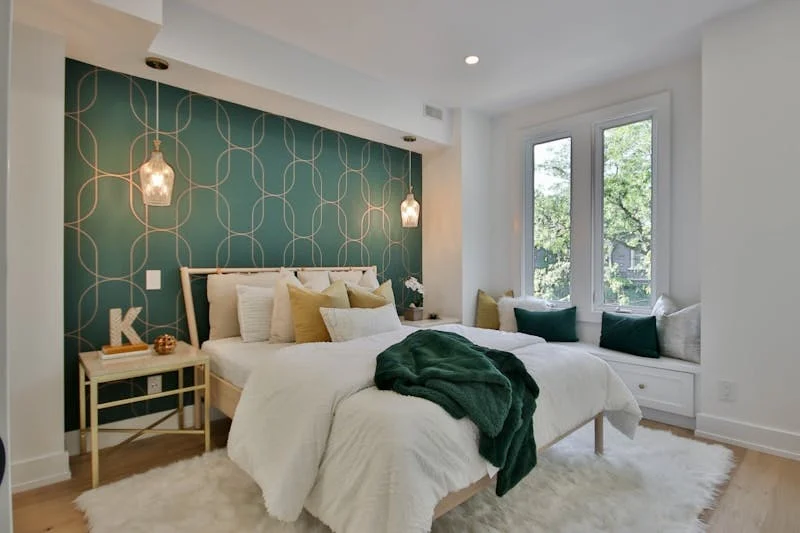In today's rapidly changing economic environment, the cost of home construction has been steadily increasing. Factors such as inflation, supply chain disruptions, labor shortages, and rising material costs have all contributed to the growing expenses associated with building a home. For urban elite residents, who often pursue ambitious and high-end projects, understanding how to keep these costs under control is crucial. This article explores why it’s necessary to grasp the concept of these powerful strategies, what urban elite residents can gain from this knowledge, how they should implement these strategies, and what could happen if they fail to do so.
In recent years, the cost of home construction has been steadily increasing, driven by factors such as inflation, supply chain disruptions, labor shortages, and rising prices of building materials. For urban elite residents planning to build or renovate their homes, these escalating costs can pose significant challenges. However, with careful planning and strategic decision-making, it is possible to keep construction costs under control while still achieving a high-quality, luxurious home. Here are five powerful strategies to help manage and reduce construction costs amid rising prices.

1. Develop a Comprehensive and Realistic Budget
Why It’s Important:
A well-defined budget is the foundation of cost control. Without a clear understanding of the total expected costs, it's easy for expenses to spiral out of control. A comprehensive budget helps set financial boundaries and provides a roadmap for managing resources efficiently.
How to Implement It:
Detailed Cost Breakdown: Work with your architect, contractor, and project manager to create a detailed budget that includes all aspects of the project, such as materials, labor, permits, design fees, and contingency funds. Break down costs for each phase of construction to ensure nothing is overlooked.
Contingency Planning: Set aside a contingency fund of 10-15% of the total budget to cover unexpected expenses. This cushion allows for flexibility and helps prevent financial strain if unforeseen issues arise.
Regular Budget Reviews: Regularly review and update the budget as the project progresses. Track expenses closely and compare them against the budget to identify any discrepancies early on. This proactive approach allows you to make adjustments before costs get out of hand.
2. Prioritize and Make Informed Choices
Why It’s Important:
In a construction project, not all elements are equally critical. Prioritizing essential features and making informed choices about where to allocate funds can help maintain control over costs without sacrificing quality.
How to Implement It:
Identify Must-Haves vs. Nice-to-Haves: Distinguish between the essential features that are non-negotiable and those that are desirable but not critical. Focus your budget on the must-haves, such as structural integrity, quality materials for durability, and essential amenities.
Value Engineering: Collaborate with your architect and contractor to explore value engineering options. This process involves evaluating design and material choices to find cost-effective alternatives that still meet your quality and aesthetic standards.
Phased Construction: Consider a phased approach to construction, where non-essential elements or luxury upgrades are completed after the primary structure is built. This allows you to spread costs over time and manage the budget more effectively.
3. Choose the Right Contractor and Negotiate Effectively
Why It’s Important:
The choice of contractor can have a significant impact on the overall cost and quality of a construction project. A skilled and trustworthy contractor will not only ensure high-quality work but also help manage costs through effective negotiation and sourcing of materials.
How to Implement It:
Do Your Research: Take the time to research and vet potential contractors. Look for contractors with a proven track record of successful projects, positive client reviews, and experience in projects similar to yours.
Get Multiple Bids: Obtain bids from multiple contractors to compare costs and services. This not only helps you get a better sense of the market rate but also provides leverage in negotiations.
Negotiate Terms: Don't be afraid to negotiate the terms of the contract, including payment schedules, timelines, and the scope of work. Clearly define expectations and ensure that there is a mutual understanding of project goals and costs.
4. Leverage Technology for Efficiency
Why It’s Important:
Technology can streamline the construction process, reduce errors, and improve efficiency, all of which can lead to significant cost savings. From project management tools to advanced construction techniques, leveraging technology can enhance overall project control.
How to Implement It:
Project Management Software: Use project management software like Procore, Buildertrend, or CoConstruct to manage schedules, track expenses, communicate with the project team, and monitor progress. These tools provide real-time updates and help keep the project organized.
Building Information Modeling (BIM): Utilize BIM software for detailed 3D modeling of the project. BIM allows for better visualization, planning, and coordination, helping to identify potential issues before construction begins, thereby reducing costly changes and rework.
Smart Home Technology: Integrate smart home technology during the construction phase to enhance energy efficiency, reduce utility costs, and add value to the property. Investing in energy-efficient systems and automation can provide long-term savings and appeal to environmentally-conscious buyers.
5. Source Materials Wisely and Plan for Supply Chain Issues
Why It’s Important:
The cost and availability of construction materials can vary widely, and supply chain disruptions can lead to delays and increased expenses. Sourcing materials wisely and planning for potential supply chain issues can help keep costs under control.
How to Implement It:
Bulk Purchasing: Buy materials in bulk whenever possible to take advantage of discounts. Work with your contractor to identify which materials can be purchased in advance and stored until needed.
Local Suppliers: Source materials from local suppliers to reduce transportation costs and support the local economy. Local suppliers may also have a better understanding of regional market conditions and can offer competitive pricing.
Alternative Materials: Explore alternative materials that offer similar quality and durability but at a lower cost. For example, consider engineered wood instead of hardwood, or recycled materials that are both eco-friendly and cost-effective.
Plan for Lead Times: Anticipate potential delays in the supply chain by ordering materials well in advance. This proactive approach can prevent project delays and avoid the need for expensive last-minute purchases.
Rising home construction costs pose significant challenges, but by implementing these five powerful strategies, urban elite residents can keep their projects on track and within budget. Developing a comprehensive budget, prioritizing essential features, choosing the right contractor, leveraging technology, and sourcing materials wisely are all critical steps to ensuring that construction costs remain under control. By taking a proactive approach to cost management, you can achieve a high-quality, luxurious home that meets your needs and desires without breaking the bank. Failure to implement these strategies can result in budget overruns, project delays, and compromised quality, turning your dream home into a financial burden. For those looking to build a home that combines luxury, quality, and cost-efficiency, mastering the art of cost control is not just advisable—it’s essential.
